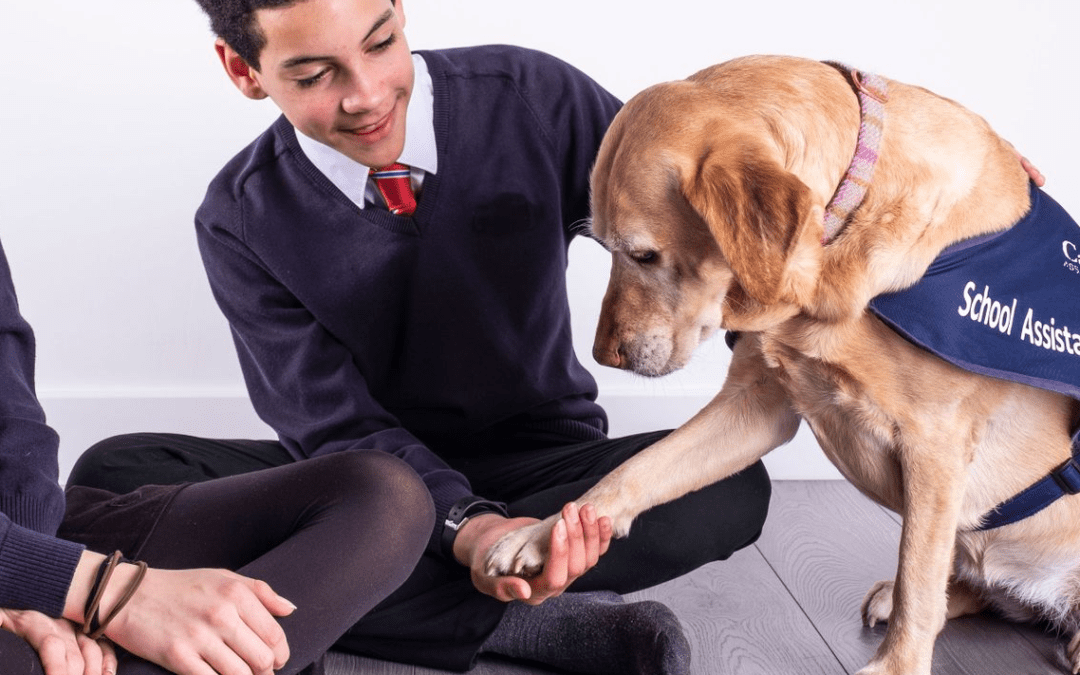Having dogs in schools is becomingly increasing popular as the benefits of Animal Assisted Interventions are making remarkable improvements to Children’s academic achievements, along with social and emotional well being. Schools are hearing about these great results and are deciding to get a dog in their school , this is fantastic, more children are benefiting from the human animal bond but let us think about this in more detail…..
What training has the dog received?
What training has the handler received?
What code of code of practices are they adhering to?
It is becoming an increasing problem in the world of Animal Assisted Interventions that untrained dog and handler teams are working in schools unregulated.
Why is training important?
There are many contributing factors as to why dogs and handlers should both have comprehensive and certified training. Firstly safety, Training should place utmost importance on the well being of both the child and the animal and be designed to reduce the risk to all those involved. Training should provide the handler with the tools they need to keep the dog, child and themselves safe at all times whilst providing an effective and informed session. The handler should have a comprehensive knowledge in to animal behaviour. What happens when the untrained uncertified dog becomes stressed? Is there a responsible human with the dog to identify this? Most likely the answer is no, a stressed dog is an unpredictable dog through no fault of its own.
The next factor we need to look at is how effective is an animal assisted therapy session when there has been no training on how to conduct an efficient session? Are appropriate goals being set and monitored? Is the young person getting the maximum benefits from the session?
What codes of conduct are the team adhering to and is the dog’s welfare being considered? Is the handler aware of the legal implications of being responsible for a dog in school? And what about insurance, without undergoing training with an animal assisted intervention provider they will not be able to provide insurance.
The aim of my article is to raise awareness of the importance of correct training, certification and ongoing quality control of the service that all schools dogs and their handler should receive.
Asking an untrained uncertified dog and handler to work in a school with no training is an unfair and an unsafe ask.
It is with the above in mind that we have set up and exciting new training programme for schools that already have a dog however the team has not received the correct training to be working in the school environment. Once the dog and handler have undertaken the Canine Assisted Learning training and passed the assessments they will then receive certification from CAL and most importantly be insured appropriately. Our programme is proving popular with schools who are benefiting from the results along with the peace of mind they are running an informed, certified, insured Animal Assisted Intervention Programme.
We would love to hear about your experiences and thoughts on the above and how this affects AAI work where ever you are in the globe.

